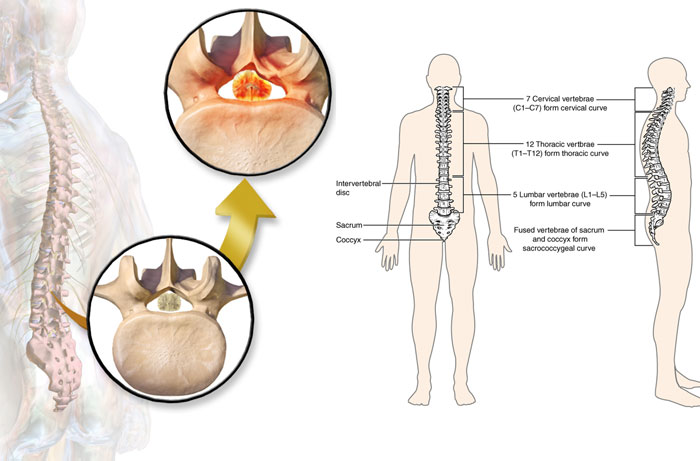

WHAT IS SPINAL DECOMPRESSION?

For those of have suffered from chronic back, neck or leg pain, they know how the pain disrupts life with finding pain relief becoming the only objective of living. The most common of such chronic pains is spinal compression which develops over a period of years accompanied by weight gain, repetitive motions and arthritis of the spine.
As the spinal compression progresses, it eventually results in a number of conditions which include bulging or herniated disc, degenerative disc disease, bone spurs, spinal stenosis, arthritis of the spine, spondylosis or spondylolisthesis. All these conditions result in non-alignment of the spine and impaction on nerve roots in the spinal canal. This results in local and radiating pain into the neck, back and legs.
Spinal decompression therapy is the only answer to this chronic pain; it can be performed surgically or non-surgically depending on the extent of degeneration. Spinal decompression basically refers to removing the extra pressure being exerted on the vertebrae, disc, joint and nerve roots. Your doctor will tell you which form of therapy is most suitable for you.
The spine consists of several small bones called vertebrae stacked one on top of another. Together they provide shape and support the weight of the body, aside from offering stability. In between each vertebra are a small pad-like disc with a rough outer surface and a soft gel-like centre. Its purpose is to provide cushioning to the movements of the vertebrae allowing them to slide smoothly over one another without touching each other.
Due to weight gain or repetitive movements over time, these discs may become damaged or displaced and bulge out and impact nerve roots, triggering chronic pain. This spinal compression can, fortunately, be treated conservatively and if that doesn’t work, it can also be treated surgically.
Non-invasive spinal decompression involves physical therapy, water exercises and manual manipulation of the spine. This stretches it back into alignment and reduces pressure on the discs, allowing it to function normally again without causing pain. It’s useful for the treatment of sciatica, worn-out spinal joints (posterior facet syndrome), injured or diseased spinal nerve roots and bulging herniated or degenerative disc disease.
If conservative treatment for a few months doesn’t help, you may need to consider decompression surgery. The following are some surgical options that you may be eligible for:
Discectomy – a portion of the disc may be removed.
Laminectomy or laminotomy – a portion of the bony arch may be removed.
Foraminotomy or foraminectomy – bone and tissue is removed to create space for nerve roots.
Osteophyte removal – bony growth removal.
Corpectomy – removing a vertebral body along with discs.














